LATEST NEWS
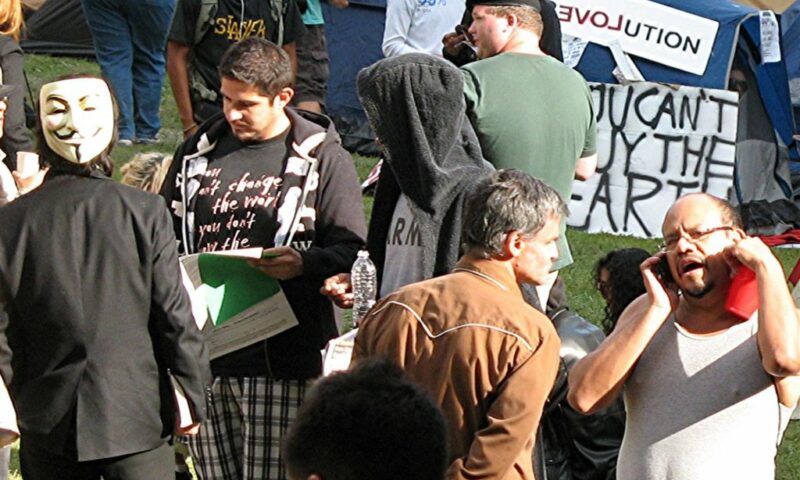
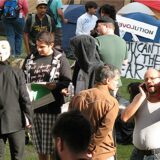
Randy Shaw’s The Activist’s Handbook is a book with legs. First published in the early 1990s, it has now been updated as a guide to “winning social change” in the new millennium. If you’re a long distance runner in any U.S. social movement—or trying to figure out how to become one—this is the training manual for your team.
The appearance of a second edition has given the California-based author and community organizer a chance to expand upon the case studies he utilized in the initial edition, adding new material about protest activity not yet stirring two decades ago. The eclectic mix of older and new material makes the information and advice that Shaw dispenses even more useful to organizers of all types. His latest Handbook examines “new strategies, tactics, issues and grassroots campaigns and revisits whether activists have learned from past mistakes.”
The ground covered includes fights for better housing and tenant rights,


On Tuesday, Bill de Blasio won a landslide victory to become the mayor of New York City, voters in New Jersey and Seatac, Washington supported minimum wage hikes and the Illinois legislature voted to legalize same-sex marriage. These are among the progressive victories that swept across the country.
Despite a few setbacks, progressives had much to cheer about, sensing that the tide is turning against the unholy alliance of big business, the Tea Party and the religious right. Growing protests — such as the “Moral Monday” movement in North Carolina, militant immigrant rights activism, battles to protect women’s health clinics from state budget cuts, strikes by low-wage workers, civil disobedience actions to challenge voter suppression and student campaigns against global energy corporations — reflect a burgeoning progressive movement bubbling up from below the surface that is beginning to have an impact on elections.
By far the most impressive symbol of this rising tide is de Blasio’s landslide win,
» Read more about: The Elections: Ebb Tide for the Tea Party? »


So how to explain this paradox?
As of November 1 more than 47 million Americans have lost some or all of their food stamp benefits. House Republicans are pushing for further cuts. If the sequester isn’t stopped everything else poor and working-class Americans depend on will be further squeezed.
We’re not talking about a small sliver of America here. Half of all children get food stamps at some point during their childhood. Half of all adults get them sometime between ages 18 and 65. Many employers – including the nation’s largest, Walmart – now pay so little that food stamps are necessary in order to keep food on the family table and other forms of assistance are required to keep a roof overhead.
The larger reality is that most Americans are still living in the Great Recession. Median household income continues to drop. In last week’s Washington Post-ABC poll,
» Read more about: Congress: Safety Nets Are Made for Shredding »
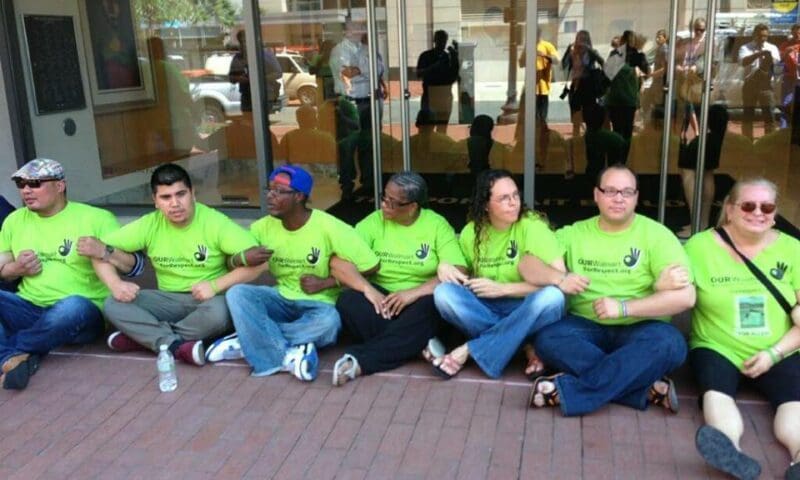

Apparently Walmart, the country’s largest — and, some say, stingiest — private employer thought its troubles at the new Chinatown grocery center were over once it opened for business in September. That, however, was corporate wishful thinking in serious need of a cleanup in aisle three. Today, November 7, the community coalition that opposed Walmart’s original entry into the historic neighborhood will be demonstrating against the mega-chain’s continued abuse of its low-paid employees. The event will culminate with the arrest of 100 men and women in front of the store.
Their immediate goal is to draw attention to Walmart’s strategy of maximizing profits by scheduling its workers for the minimum number of hours possible and by encouraging them to apply for food stamps and other tax-funded programs to supplement their meager paychecks. (Not to mention firing dissident workers.) But organizers also hope to build momentum for nationwide protests against Walmart scheduled to take place in three weeks.
» Read more about: Walmart Civil Disobedience Planned for November 7 »
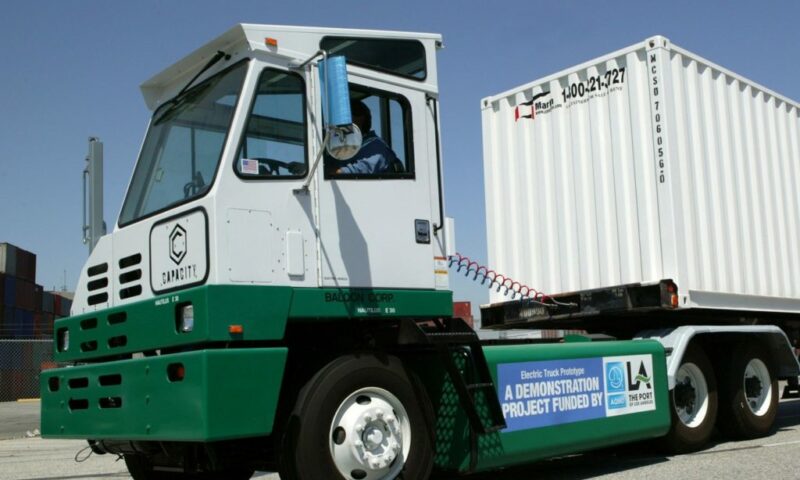

Seven years ago, the Coalition for Clean and Safe Ports came together with one simple goal: to fix the broken port trucking system. For too long, port trucking had been a case study in market failure: The trucks spewed emissions that killed three area residents each week; a fragmented, inefficient market led to delays for cargo interests; and truck drivers had among the lousiest jobs around. So we came together – environmentalists, faith leaders, immigrant rights groups, union organizers and others – and worked with the Port of Los Angeles to develop what became the award-winning Clean Truck Program (CTP).
We’ve made great strides toward some of our goals. The entire fleet of about 12,000 trucks has turned over. No more 60-year-old trucks in service (no joke!). All trucks have cleaner engines and truck emissions have decreased an estimated 80 to 90 percent. Residents around the port – and along major trade freeways like the 710 – are breathing better and we’re making a real dent in children’s asthma,


Yesterday’s Los Angeles Times brought a behind the scenes account of the genius of San Diego City Attorney Jan Goldsmith and his brilliant maneuvers to oust former Mayor Bob Filner.
I’m not sure what led to the piece, but in it we learn that Goldsmith—a former legislator best known for his campaign to legalize ferrets and the resulting Willie Brown quip about his toupee—was single-handedly responsible for Filner’s resignation.
The key: “Goldsmith persuaded the City Council to refuse to defend Filner in the [Irene] Jackson lawsuit and instead force him to hire private attorneys.”
Why so critical? “Goldsmith’s investigators examined Filner’s finances and concluded he could not afford lawyers to fight the lawsuit.”
Why so brilliant? “’It was a bluff,’ said Goldsmith, noting that California law requires a public employer to represent an employee, even a mayor, accused of on-the-job-misdeeds.”
Why should we care?


Towering profiles of moss-hung oaks, silhouetted against languid Southern sunsets, form some of the indelible images from Steve McQueen’s new film. So too do gruesome close-ups of the scarred backs of antebellum slaves, whose skin has hardened to bark by years of whippings. This is the central visual paradox in 12 Years a Slave, which contrasts quiet moments of primeval, pastoral beauty with the loud, primitive violence practiced by plantation owners.
This is not an easy film to watch, and not simply for its graphic mayhem. The conversational racism of the slavers and the shrugging acceptance of the “peculiar institution” by the story’s more enlightened figures suggest a moral bankruptcy that only the coming Civil War could overcome. That realization will put many white viewers on the spot: It’s an easy thing to boo a tyranny from the safe distance of 170 years, but how do we respond toward more contemporary evils – evils that some may take for granted?
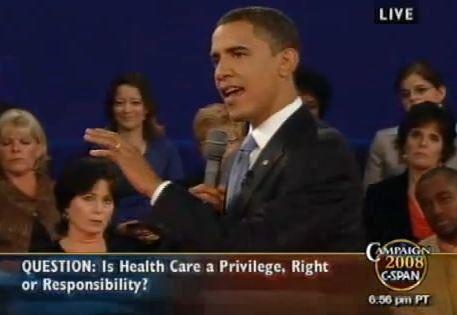

There are good reasons why President Obama’s leading message on health care during the 2008 campaign, often repeated since, was “if you like your health insurance, you can keep it.” That message was created to overcome the fear-mongering that had blocked legislative efforts to make health care a government-guaranteed right in the United States for a century.
Our health is of central importance to our lives, deeply personal to our well-being and those of our loved ones. That concern has translated politically; for decades, people have told pollsters that health care is a top concern. It is why every 15 to 20 years – from 1912 to 2008 – the nation has returned to a discussion about whether and how the government should guarantee health coverage, the debate rising phoenix-like from one spectacular defeat after another. A big reason for those defeats has been that opponents have exploited those deep feelings to scare the public about proposed reforms.
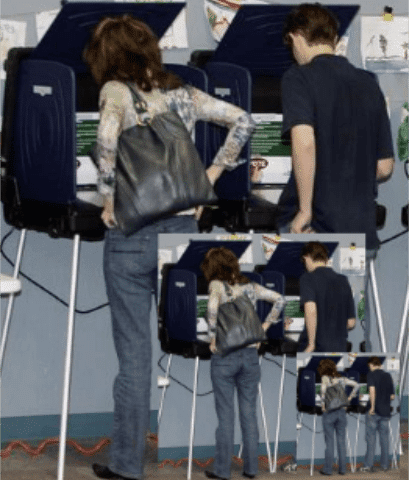

A troubling trend has spread throughout the United States: people have stopped voting in local elections. This has even occurred in hotly contested races with candidates generating national media coverage, as in New York City’s September primary that included Elliot Spitzer and Anthony Weiner. Despite their presence and strong mayoral candidates from the city’s leading constituencies, voter turnout was only 20 percent (22 percent among Democrats). The last time NYC voted for mayor without an incumbent on the ballot, in 2001, the Democratic primary turnout was 30 percent, despite a less competitive field. Los Angeles’ heavily contested March 2013 mayoral primary election—which, as in NYC, offered voters the chance to elect the city’s first female mayor— had only a 15 percent turnout. This rose only to 23 percent in the May runoff, when Eric Garcetti won the mayor’s race with fewer votes than any newly elected mayor since the 1930s.


You may have seen Puente Hills while driving the 60 Freeway east of Los Angeles. It looks like a 700-acre, 450-foot-high, tree-covered mountain. However, only a few small hills were there when the facility opened in 1957. The mountain itself is made from seven decades of Southern California’s waste.
Puente Hills Landfill accepted its final truckloads of waste yesterday. Today, what was the country’s largest landfill is closed – a milestone in the environmental history of Southern California and the country.
Puente Hills had been taking in a third of the waste of Los Angeles County, as much as 13,000 tons per day at its recent peak. While some workers will remain for the next year-plus, putting a final cover on the site, hundreds of trucks that used to dump there every day will be headed elsewhere. Don’t Waste LA and others concerned for our environment and communities are working to make sure those trucks eventually head somewhere other than the next landfill on a new hillside.
» Read more about: We Don’t Need to Make Mountains of Waste Anymore »
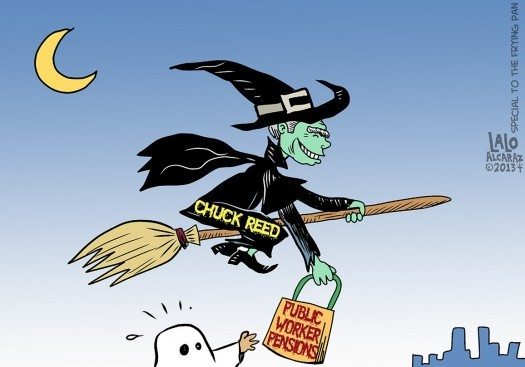

Last week San Jose Mayor Chuck Reed delivered his usual speech about the benefits of slashing the retirement benefits of his city’s public employees – and why he is now pushing for a statewide ballot measure that could dramatically change the lives of hundreds of thousands of Californians. Reed’s initiative – which he characterizes as a bipartisan effort and which hasn’t yet qualified for the 2014 ballot — would allow the state and local governments to reduce retirement benefits for current employees for the years of work they perform after the measure’s changes go into effect. What was not usual about Reed’s speech was its setting: The Roosevelt Hotel in New York City, 3,000 miles from California.
Reed was a keynote speaker at a “Save Our Cities” conference sponsored by the Manhattan Institute, a conservative think tank co-founded by Ronald Reagan’s CIA director, William Casey.
» Read more about: Pension Cutters: Bipartisan Slogans, Right-Wing Money »
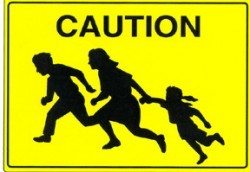

Woke with a start, the dogs
barking out by the fence,
yard flooded with
light. Groped my way
to the window.
Out on the road a dozen quick
figures hugging to shadows:
bundles slung at their shoulders
& water jugs at their hips. You
could hear, under the rattle of
wind, as they passed, the crunch of
sneakers on gravel. Pollos. Illegals
who’d managed to slip past the
Border Patrol, its Broncos
& choppers endlessly circling the
canyons & hills between here & Tecate.
Out there, in the dark, they could have
been anyone: refugees from Rwanda,
slaves pushing north.
Palestinians, Gypsies, Armenians, Jews….
The lights of Tijuana, that yellow
haze to the west, could have
been Melos, Cracow, Quang Ngai….
I watched from the window till they were lost in
the shadows.


In terms of the math, figuring out who will be affected in the country will be easy. Just walk outside and count the first seven people on the street – and then remember one of them.
What might be harder is the realization that less does not mean more when it comes to families and individuals experiencing poverty and needing food to survive, especially during the coming cold months.
An estimated 47.6 million people in the country will see a total of $5 billion in across-the-board cuts in food stamp support, officially starting Friday, because a 2009 law that supported a boost in assistance will lapse, according to a report from the Center on Budget and Policy Priorities.
While a family with three people will see a $29 monthly cut in the safety net program, a family with four people will face a $36 monthly reduction, the Washington,


Last week’s announcement of a settlement between the state of California and two political campaign organizations linked to the Koch brothers fittingly coincided with the centenary of the first scientific explorations of Los Angeles’ La Brea Tar Pits. The history of the tar pits is pretty straightforward: For at least 38,000 years, thick, petroleum-based asphaltum has oozed up from fissures at the site, a noxious goo that long ago entrapped hapless animals as well as the predators that tried to feast on them.
Rather more recent and less explored have been the political intrigues of petroleum tycoons Charles and David Koch, although news of their ambitions is slowly rising to the surface, too. Last year a daisy chain of groups with Koch connections funneled campaign contributions into a pair of policy measures on the 2012 California ballot: Proposition 30, a tax-raising measure designed to restore much-needed funds to public education,
» Read more about: Dark Money, Honey: How a Koch Ring Got Busted »
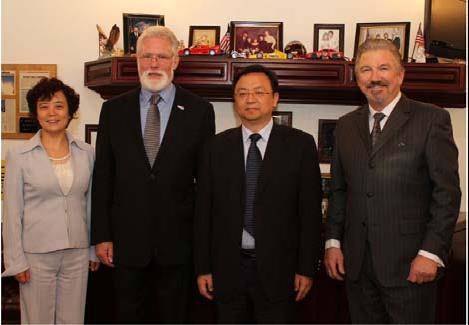
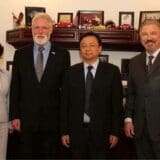
(Note: A Halloween-themed rally will take place Thursday, October 31, 11:30 a.m.-12:30 p.m., outside BYD’s office, 1800 S. Figueroa St. (at W. 18th St.), downtown Los Angeles.)
It was with great excitement that California elected officials welcomed the Chinese company Build Your Dreams (BYD) to build electric buses in places like Lancaster, Long Beach and Los Angeles. Hopes were high that BYD’s Zero Emissions buses would clean the air, and hundreds of Angelenos would go to work in BYD’s new downtown Los Angeles office, earning paychecks to support their families.
But this weekend, news reports revealed that the company’s promises of jobs and quality products couldn’t be more hollow. The California Department of Industrial Relations issued BYD numerous citations on October 10, fining the company $79,250 and requiring it to pay $20,000 in back wages to 22 employees.
City officials, according to the Los Angeles Times,
» Read more about: ‘Build Your Dreams’ Company a Nightmare for Workers »
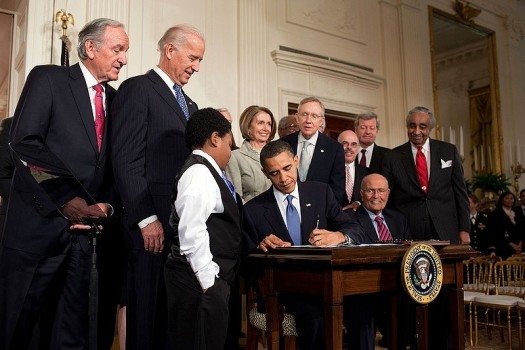
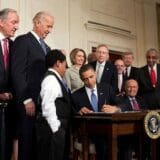
Republicans may not have succeeded in defunding the nations’ newest social insurance program, Obamacare, but they now are aiming at the foundational programs, Social Security and Medicare. And this time, they’ll have the President on their side. It would be a mistake for progressives to assume that a grand budget bargain will fall apart once again, even if that remains likely. Instead, we need to turn the debate from cutting social insurance to strengthening both the finances and benefits of both big retiree programs. The best way to do that is by championing simple, bold solutions.
In his post shutdown press conference, President Obama repeated his call for changes in Social Security and Medicare. His 2014 budget included cuts to benefits for both. That aligns him with House Speaker John Boehner, who called for savings in Social Security and Medicare during the shutdown battle. Senators from both parties have shown their willingness to support benefit cuts as part of a big budget deal.
» Read more about: Saving Medicare, Social Security: Block That Grand Bargain! »
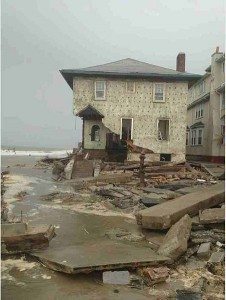

This week marks the first anniversary of Hurricane Sandy, which one year ago tore a path of destruction through much of New York and New Jersey. While media coverage will no doubt focus on the images of nature wreaking havoc on the Eastern Seaboard, we would do well to look at the very human failings that contributed to the damage and suffering inflicted by Sandy.
A good place to start is the practices of companies like ConEdison, the utility giant responsible for electrical and gas service for much of the region. Like other utilities across the country, ConEdison has made significant cuts to its staff over the past several years, while using outside contractors to fill the gaps. In normal times, these cuts lead to unnecessary service delays and interruptions that inconvenience consumers. In a time of crisis, however, understaffing has much more serious consequences.
The overall impact of Sandy was staggering.
» Read more about: Hurricane Sandy: The Price of Deregulation »
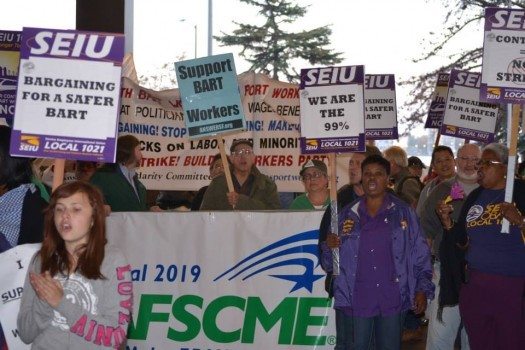
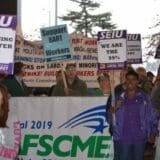
On Friday, BART [Bay Area Rapid Transit] employees at SEIU and ATU will likely ratify the deal negotiated last week and the following day BART’s Board of Directors will likely vote to approve it. Apart from a few crazies on both the left and right who were hoping that the strike or the dispute kept going, most of us BART riders will be extremely glad that it is finally over and hoping that we never have to go through this again. It’s not surprising, therefore, that some politicians have attempted to exploit public frustration. Orinda Councilman Steve Glazer, who is running for the California Assembly, has tirelessly promoted his campaign for change in state law to ban strikes by BART workers. It’s an easy time to call for coercive legislation but a strike ban is the wrong solution for the Bay Area and it wouldn’t work.
Are BART Workers Strike–
» Read more about: Banning BART Strikes Is No Answer to Labor Disputes »
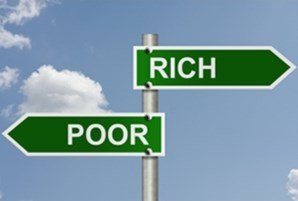

Rich and poor — two sides of the same coin. That “coin” meaning money and how much you have. While Americans seem to love money and idolize those who possess it, having it isn’t so good for you. That’s right. Not only does money not buy happiness, it can be downright hurtful to those who are rich, as well as the rest of us.
For years I have noticed that BMW drivers tend to cut people off and generally drive with an attitude of arrogance toward others. Now some recent studies demonstrate that I am not just seeing things. People with more expensive cars drive as though they’re entitled to cut people off at intersections or whip by on the right.
The rich also prefer to play and work alone – distancing themselves from others. But you don’t have to actually be rich to act like that.


(This article first appeared in the Sierra Club journal Sierra and is republished with permission.)
The late-June weekend heat wave comes on as predicted. By 10 a.m., it’s 90°F in a South Los Angeles parking lot where scores of local residents have gathered, lured by community leaders and the Los Angeles Department of Water and Power (DWP). Over the hum of the crowd, speakers take the stage for this Green the Block workshop: community organizers, environmentalists, labor union leaders and local politicians, all talking about the changing climate, the sputtering economy and the need to use less energy. It’s important stuff, but not particularly riveting. Meanwhile, it keeps getting hotter. By the time Ron Nichols, the utility’s general manager, takes the stage, the sun has chased people under canopies at either side of the lot and the chairs in front of him are almost empty.
» Read more about: Repowering Los Angeles One Block at a Time »